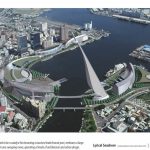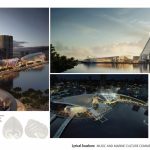The Port of Kaohsiung has transformed from a small lagoon in the 1640s, to a major export harbor of agricultural products during Japanese rule in the first half of the 20th century, to one of the world’s top container ports. Lyrical Seashore, designed to be a catalyst for becoming a tourism/trade/transit port, embraces a large portion of the city’s harbor in one sweeping move, operating at levels of architecture and urban design. Volumes of program are distributed on a prominent tray of liminal land with the intention of intensifying the urban pulse of the populace. The sensuous yet logical form of ships and maritime objects and the fluidity of music are the themes drawn from the program and the site, setting the tone for the seductive spatiality and repertoire of shapes.
Honorable Mention | RTFA 2014 Awards
Category: Public Building Concept
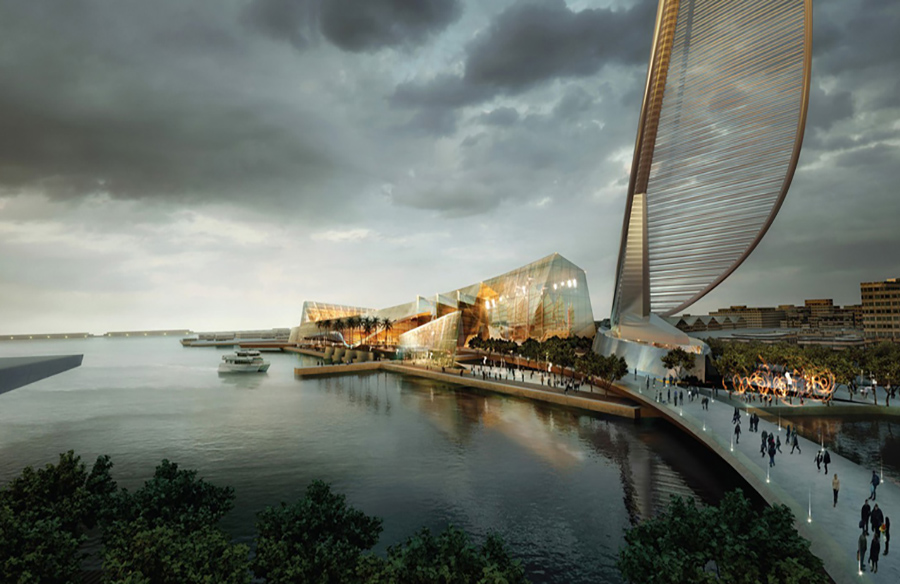
| Project Details | |
| Participant Name: | John Marx |
| Country: | United States |
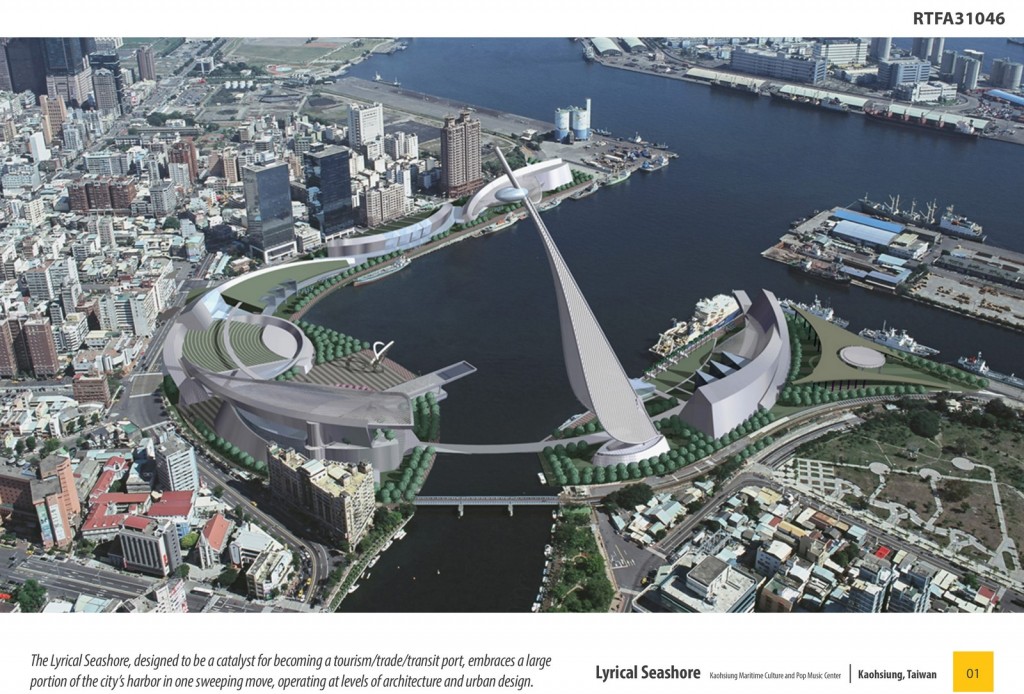
©Form4 Architecture
A partial ring of performing art facilities is interspersed with a dense network of retail and restaurant elements, as well as large cultural institutions. These elements blend into a necklace of buildings that secure continuous activity. Here the existing curvilinear railway line is now used as a bicycle path, and the shape of the site itself triggers the fluid geometry of the final form. The large chunk of real estate contains an indoor concert hall for 5,000 people and an outdoor performance area for 12,000 people, both placed at the center with two fingers of facilities on both sides.
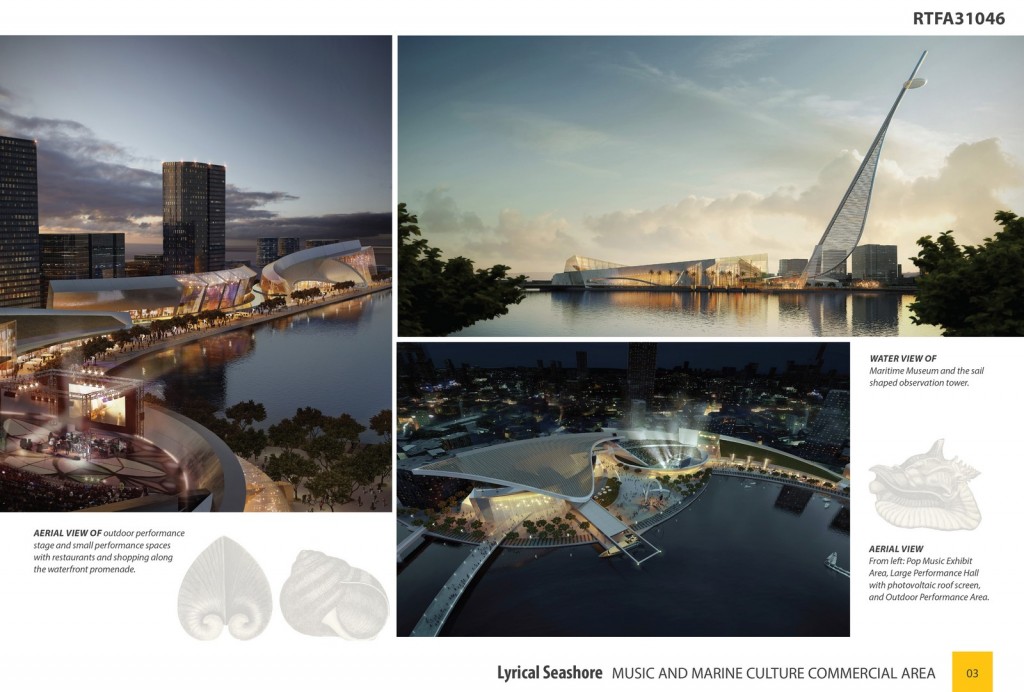
©Form4 Architecture
Facing the city, the project appears like a two-story curtain of architectural objects with portals functioning as public plazas protecting views of the water. The most significant is a string of eight individual performance spaces between the auditoria, housing restaurants, shops, and a recording studio at the tail end, caressing the more dense side of the city. Standing opposite is the Marine Culture Exhibit Center, a music innovation center and a leaning landmark “sail-like” observation tower that is the inevitable new landmark on the city skyline. Throughout the project, large curving sun canopies are covered with photo-voltaics to produce on-site energy.
- ©Form4 Architecture
- ©Form4 Architecture
